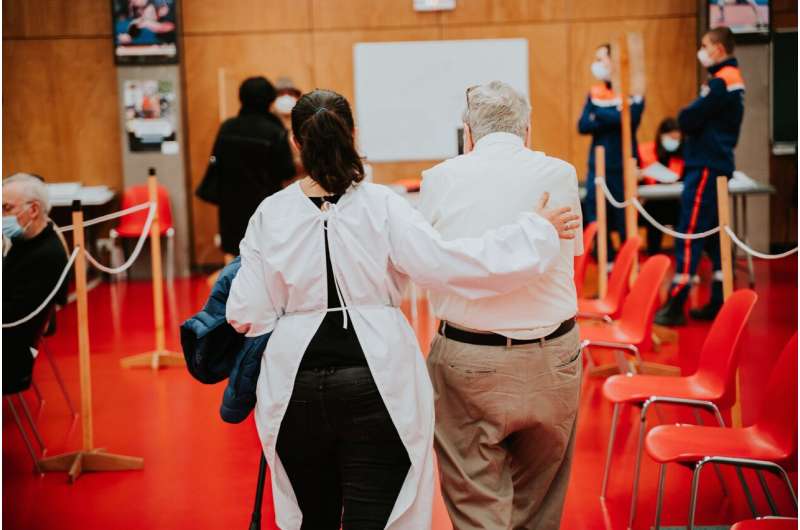New vaccine allocation model focuses on fairness and diversity

Lulu Kang, associate professor of applied mathematics at Illinois Institute of Technology, and a team of researchers from the University of Illinois Chicago have put a new twist on traditional resource allocation models to optimize the distribution of COVID-19 vaccines, treatments, testing supplies, and other related resources, publishing their findings, "Fair and Diverse Allocation of Scarce Resources," in Socio-Economic Planning Sciences.
Scientists and policymakers commonly use mathematical models to optimize the allocation of resources, for example, after a natural disaster. However, these resource allocation models do not consider all the variables that sustain the spread of COVID-19.
"The traditional resource allocation focuses on even coverage," Kang says. "The goal is to make sure the resource per capita in an area—in a city, for instance—is the same throughout the area. But this traditional strategy is only applicable when the resource is abundant and there is no need to give priority to certain subgroups of the population."
People's risk to exposure and susceptibility to the virus that causes COVID-19 can vary based on age, health conditions, income, race, and profession, among other factors.
Kang, along with Hadis Anahideh, research assistant professor of mechanical and industrial engineering at UIC, and Nazanin Nezami, a Ph.D. student in industrial engineering and operations research at UIC, designed a fair-diverse allocation optimization framework. Based on geographic diversity and social group fairness, the framework aims to get these limited resources to the most vulnerable subgroups of the population while ensuring the allocation is independent of an individual's demographic background, including race, ethnicity, or economic status.
"Our resource allocation tries to achieve an optimal balance between fairness and diversity, and this optimal balance or compromise is driven by the data," Kang says.
According to the researchers, an allocation strategy is fair if the average amount of resources an individual receives only depends on their exposure rate to the disease and is independent of the individual's demographic or socioeconomic background. It is diverse if the geographical location does not affect the average resources an individual can receive. The research proposes a solution to distribute scarce medical resources in a fair manner to all communities and to protect certain groups that are more vulnerable to the pandemic's impact. The team argues this solution helps stop the spread of the pandemic more effectively and pushes for justice and fairness in health care decision-making.
The team's resource allocation model tries to achieve a data-driven optimal balance between fairness and diversity. The researchers used publicly available data on COVID-19 rates in New York City, Chicago, and Baltimore, as well as population data collected by the United States census. Certain ZIP code areas in these cities would receive a very different amount of resources using the proposed fair-diverse allocation strategy versus a geographical diversity-only or a fairness-only strategy.
"On one hand, it shows the effectiveness of the proposed approach," Kang says. "On the other hand, it shows how different communities in segregated cities such as Chicago and New York had significantly different degrees of risk and vulnerability to the pandemic."
The research team aggregated COVID-19 case data and other demographic data, such as age, gender, and race, to estimate the risks of COVID-19 exposure at the ZIP code level. The allocation strategy was adjusted to ZIP code level as this data was not detailed at the individual level.
"Some of the ZIP code areas that should be prioritized by our approach in fact were among the first several ZIP code areas where Chicago gave vaccine access to all their residents," Kang says. "So I am excited that our research is consistent with our city's policy, to a degree."
More information: Hadis Anahideh et al, Fair and diverse allocation of scarce resources, Socio-Economic Planning Sciences (2021). DOI: 10.1016/j.seps.2021.101193



















